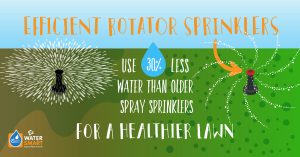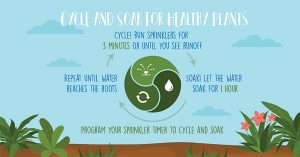By Debbie Arrington
Guest Writer
Mulch does so much. Following nature’s lead, mulch can insulate plant roots from heat and cold, cut down on weeds, feed the soil – and save lots of water.
 In summer, a layer of organic mulch – wood chips, straw, dried leaves or similar material – can add up to major water savings. Local water managers estimate that 2 to 3 inches of mulch can save 30 gallons of water per 1,000 square feet every time irrigation is turned on.
In summer, a layer of organic mulch – wood chips, straw, dried leaves or similar material – can add up to major water savings. Local water managers estimate that 2 to 3 inches of mulch can save 30 gallons of water per 1,000 square feet every time irrigation is turned on.
Landscape experts know that mulch is key to helping plants not only survive but thrive during Sacramento summers.
“Mulch is the essence of garden life, the foundation for your garden,” says Greg Gayton, garden guru for Green Acres Nursery & Supply. “Mulch suppresses weeds – which cuts down on work. It cools the roots of plants and maintains moisture so plants can get through the summertime. And it helps soil biology; that makes for healthier plants.”
Mulch is particularly important during summer months, he notes. “In summer, no mulch is a big problem. Mulch retains moisture. Without it, your garden dries out quickly, plants are stressed. With mulch, you don’t water as often and your plants are much happier.”
Applying mulch: How much and how often?
How much mulch does your garden need? For best results, apply wood chips in a 2- to 3-inch layer. One 2-cubic foot bag covers 8 to 12 square feet. One cubic yard covers 162 square feet 2 inches deep or 108 square feet 3 inches deep.
Don’t mound mulch around trunks. Make sure to clear a space at least 4 to 6 inches away around trees or shrubs. Otherwise, those plants retain too much moisture at their base; that can lead to crown rot.
In his own garden, Gayton uses lots of organic mulch including soil amendments such as worm castings or aged chicken or steer manures.
“I always mulch twice a year,” he says. “I like to put down manures. I’m always adding things to the soil. I don’t incorporate it (dig it in); I just lay it on top.”
Then, the nutrients can trickle down into the soil while the blanket of mulch smothers weeds. When these amendments are dug into the soil, that can bring fresh weed seeds to the surface to sprout.
Choosing the right mulch
“I prefer organic mulches because they add to the soil,” Gayton explains. “It’s really important to build up nice soil biology.”
That biology is based on microbes – the microscopic organisms that break down nutrients in soil. Without microbes, plant roots can’t access those natural nutrients. Microbes really appreciate that mulch blanket; while feeding them, mulch helps keep their environment comfortable, too.
Gayton prefers plain wood chips to dyed. “I prefer a natural look – I’m a purist,” he says. “Bark is always good natural looking. I prefer the small pieces; they break down faster.”
Considerations for fire-prone areas
Gorilla hair – shredded cedar bark – is another popular choice but use with caution. “Gorilla hair is great – if you don’t live in a high fire-danger area,” Gayton notes. “It keeps the ground cool, but it can catch fire easily. Don’t use it in the foothills, but it’s definitely OK in the city.”
Gayton is not a fan of landscape rocks as mulch. They may look cool in a landscape, he notes, but tend to absorb heat and stress plant roots. Some landscapers like decomposed granite, gravel or rocks around shrubs and trees because they’re easy to blow off leaves. But the rocks aren’t adding nutrients to the soil.
However, rock doesn’t burn. In high fire-danger areas, decomposed granite or gravel is a must to help create defensible space. The California Department of Forestry and Fire Protection recommends surrounding structures with a 5-foot wide buffer of hardscape, gravel or rock as well as using gravel as a fire buffer in the landscape.
“It’s a barrier to fire and serves a purpose,” Gayton says. “It looks nice and neat, but I tend to use organic mulch and use rock sparingly.”
Here’s an opportunity to pick up organic mulch – for free. It’s Mulch Mayhem on Saturday.
To help residents in Sacramento and Placer counties get their landscapes summer-ready, Mulch Mayhem provides free wood chips at several locations, sponsored by the Regional Water Authority and local water providers. This mulch is for personal use only and residents are limited to one cubic yard. Residents also must either bag it themselves or bring an open-bed truck or trailer for pick up. You can get all of the event details at BeWaterSmart/mulch-mayhem.
Debbie Arrington is a longtime home and garden reporter and co-author of the blog Sacramento Digs Gardening: https://sacdigsgardening.californialocal.com/



